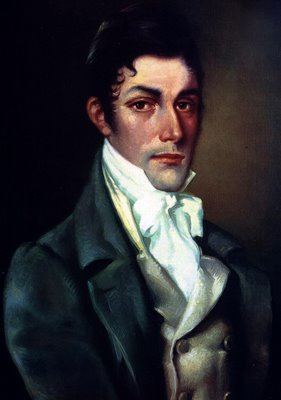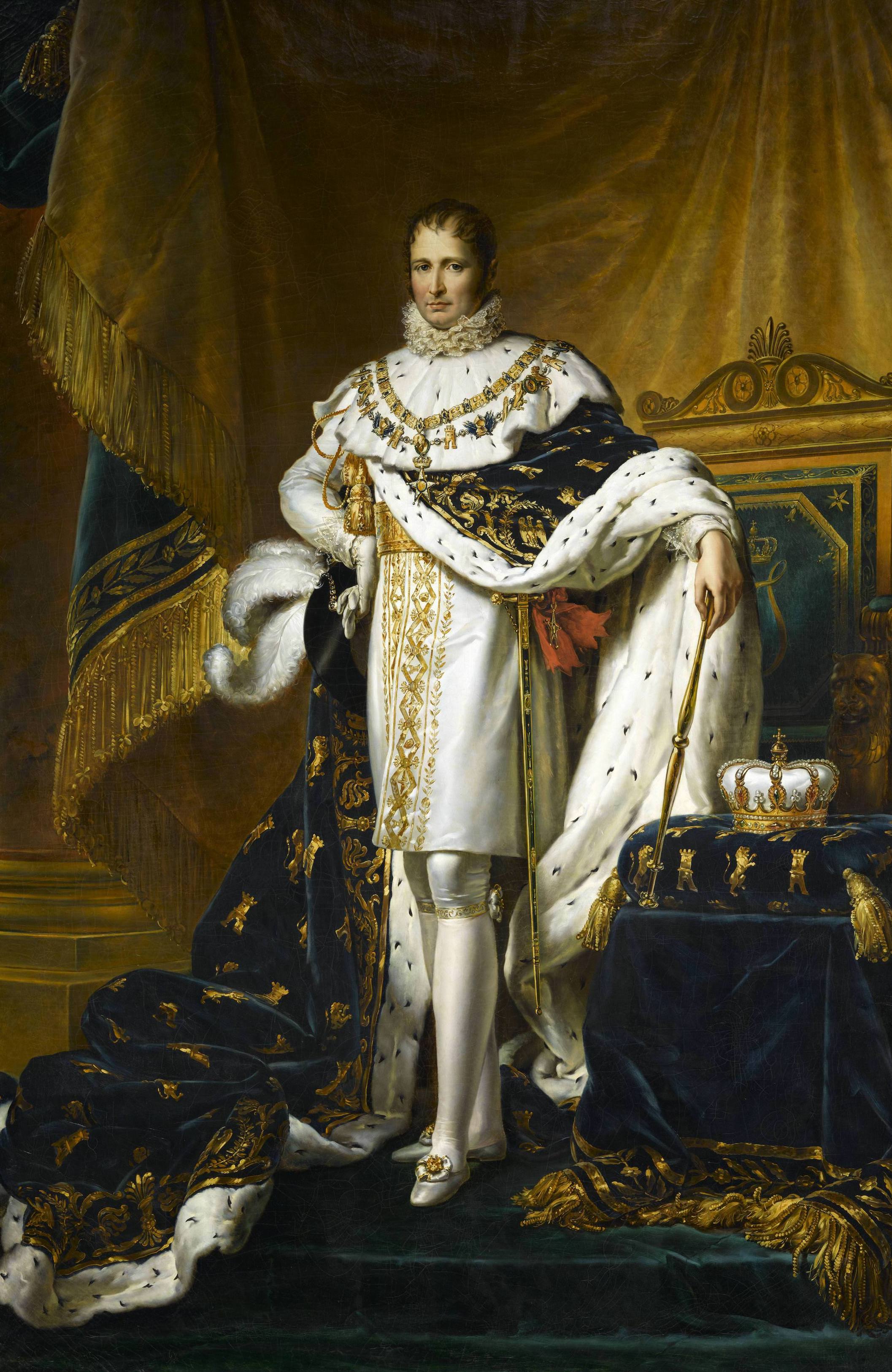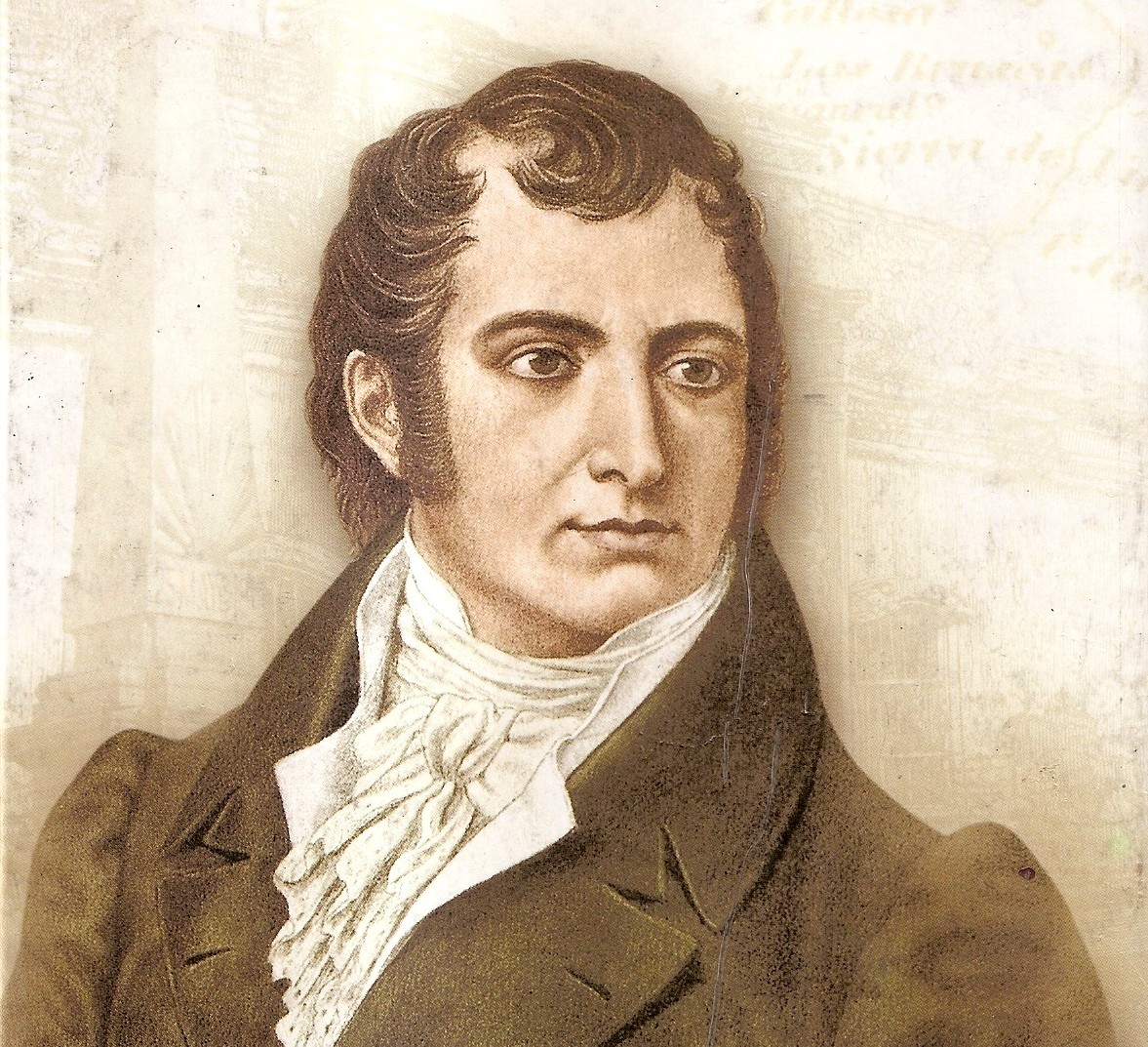|
Ana Estefanía Dominga Riglos
Ana Estefanía Dominga Riglos Lezica, by marriage Ana Riglos de Irigoyen (3 August 1788 – 14 July 1870), was a Buenos Aires patrician, an Argentine patriot, wife of the soldier and police chief Miguel de Irigoyen Miguel Remigio de Irigoyen (2 October 1764 – 11 June 1822) was an Argentine soldier and police chief during the period when Argentina was gaining independence from Spain. Family Miguel Remigio de Irigoyen de la Quintana Riglos was born on 2 Oc .... Family Ana Estefanía Dominga Riglos Lezica was born on 3 August 1788 in Buenos Aires. She was from one of the leading families of Buenos Aires. Her father was doctor Francisco Javier de Riglos y San Martín de Avellaneda, advocate of the Real Audiencia de Charcas. Her mother was Juana Lezica y Ortega. She was recognized as one of the "''Patricias Argentinas''". Her father's brother was Miguel Fermín Mariano Riglos San Martín, who married Mercedes de Lasala de Riglos. Mercedes Lasala was one of the founders of the So ... [...More Info...] [...Related Items...] OR: [Wikipedia] [Google] [Baidu] |
Buenos Aires
Buenos Aires ( or ; ), officially the Autonomous City of Buenos Aires ( es, link=no, Ciudad Autónoma de Buenos Aires), is the capital and primate city of Argentina. The city is located on the western shore of the Río de la Plata, on South America's southeastern coast. "Buenos Aires" can be translated as "fair winds" or "good airs", but the former was the meaning intended by the founders in the 16th century, by the use of the original name "Real de Nuestra Señora Santa María del Buen Ayre", named after the Madonna of Bonaria in Sardinia, Italy. Buenos Aires is classified as an alpha global city, according to the Globalization and World Cities Research Network (GaWC) 2020 ranking. The city of Buenos Aires is neither part of Buenos Aires Province nor the Province's capital; rather, it is an autonomous district. In 1880, after decades of political infighting, Buenos Aires was federalized and removed from Buenos Aires Province. The city limits were enlarged to include t ... [...More Info...] [...Related Items...] OR: [Wikipedia] [Google] [Baidu] |
Miguel De Irigoyen
Miguel Remigio de Irigoyen (2 October 1764 – 11 June 1822) was an Argentine soldier and police chief during the period when Argentina was gaining independence from Spain. Family Miguel Remigio de Irigoyen de la Quintana Riglos was born on 2 October 1764 in Buenos Aires. His paternal grandfather was Juan Martín de Irigoyen, born in Azpilkueta in Baztan, Navarre on 3 September 1689, deputy in Elizondo, Navarre, in 1734. Miguel's father was Ignacio Irigoyen Echenique, born in Azpilkueta on 11 March 1728, who held various civic offices in Buenos Aires including being mayor in 1763 and 1776. He died in Buenos Aires on 22 February 1784. His mother was Francisca de la Quintana Riglos, born in Buenos Aires on 26 September 1734. Her parents were Nicolás de la Quintana y Echevarría, born in Bilbao on 24 September 1693, and Leocadia de Riglos y Gaeta, born in Buenos Aires on 29 June 1710. Miguel was the second of 13 children. His older brother was Juan Antonio Mariano Francisco Irigo ... [...More Info...] [...Related Items...] OR: [Wikipedia] [Google] [Baidu] |
Mercedes De Lasala De Riglos
Mercedes de Lasala de Riglos or (incorrectly) Ana Lasala de Riglos (23 September 1764 – 1 January 1837), known as Madame Riglos, was an Argentine patriot and socialite during the period when Argentina was gaining its independence from Spain. Her home was a meeting place where information could be exchanged and the issues of the day discussed. In 1823 she was one of the founders of the famous philanthropic society Sociedad de Beneficencia de Buenos Aires and served as its first president. Family María Josefa de las Mercedes Lasala Fernández Larrazabal was born in Buenos Aires on 23 September 1764 and baptised two days later. She was from an old patrician family. Her father was Jean Baptiste de La Salle Bachaulet (8 February 1729 – c. 1780), originally from Monein, Bearn, France. Her mother was Juana Agustina Fernandez de la Cruz Larrazabal, born on 5 May 1741 in Buenos Aires. Mercedes was the second oldest of a family of at least 10 children. Her youngest sister was Maria ... [...More Info...] [...Related Items...] OR: [Wikipedia] [Google] [Baidu] |
Bernardino Rivadavia
Bernardino de la Trinidad González Rivadavia (May 20, 1780 – September 2, 1845) was the first President of Argentina, then called the United Provinces of the Río de la Plata, from February 8, 1826 to June 27, 1827. He was educated at the Colegio Nacional de Buenos Aires, Royal College of San Carlos, but left without finishing his studies. During the British invasions of the River Plate, British Invasions he served as Third Lieutenant of the Galicia Volunteers. He participated in the Cabildo abierto del 22 de mayo de 1810, open Cabildo on May 22, 1810 voting for the deposition of the viceroy. He had a strong influence on the First Triumvirate (Argentina), First Triumvirate and shortly after he served as Minister of Government and Foreign Affairs of the Province of Buenos Aires. Although there was a General Congress intended to draft a constitution, the beginning of the Cisplatine War, War with Brazil led to the immediate establishment of the office of President of Argenti ... [...More Info...] [...Related Items...] OR: [Wikipedia] [Google] [Baidu] |
Nicolás Rodríguez Peña
Nicolás Rodriguez Peña (1775, in Buenos Aires – 1853, in Santiago de Chile) was an Argentine politician. Born in Buenos Aires in April 1775, he worked in commerce which allowed him to amass a considerable fortune. Among his several successful businesses, he had a soap factory partnership with Hipólito Vieytes, which was a center of conspirators during the revolution against Spanish rule. In 1805 he was a member of the "Independence Lodge", a masonic lodge, along with other prominent revolutionary patriots such as Juan José Castelli and Manuel Belgrano. This group used to meet in his ranch, then situated in what today is Rodriguez Peña square in Buenos Aires. He was a member of the local militia in the British invasions of the Río de la Plata (1806 and 1807), and after taking part as promoter and financier of the May Revolution, he collaborated in the formation of the Primera Junta. Was secretary to Castelli, and went with him in the liberation army's expedition to Córdo ... [...More Info...] [...Related Items...] OR: [Wikipedia] [Google] [Baidu] |
Cornelio Saavedra
Cornelio Judas Tadeo de Saavedra y Rodríguez (September 15, 1759 in Otuyo – March 29, 1829 in Buenos Aires) was a military officer and statesman from the Viceroyalty of the Río de la Plata. He was instrumental in the May Revolution, the first step of Argentina's independence from Spain, and was appointed president of the Primera Junta. Saavedra was the first commanding officer of the Regiment of Patricians created after the ill-fated British invasions of the Río de la Plata. The increased militarization of the city and the relaxation of the system of castas allowed him, as other criollo peoples, to become a prominent figure in local politics. His intervention was decisive to thwart the Mutiny of Álzaga and allow viceroy Santiago de Liniers to stay in power. Although he supported the establishment of a government Junta, as others created in Spain during the contemporary Peninsular War, he desired that criollos had an important role in it (the mutiny of Álzaga was promot ... [...More Info...] [...Related Items...] OR: [Wikipedia] [Google] [Baidu] |
May Revolution
The May Revolution ( es, Revolución de Mayo) was a week-long series of events that took place from May 18 to 25, 1810, in Buenos Aires, capital of the Viceroyalty of the Río de la Plata. This Spanish colony included roughly the territories of present-day Argentina, Bolivia, Paraguay, Uruguay, and parts of Brazil. The result was the removal of Viceroy#Spanish Empire, Viceroy Baltasar Hidalgo de Cisneros and the establishment of a local government, the Primera Junta (''First Junta''), on May 25. The May Revolution was a direct reaction to Peninsular War, Napoleon's invasion of Spain. In 1808, King Ferdinand VII of Spain Abdications of Bayonne, abdicated in favor of Napoleon, who granted the throne to his brother, Joseph Bonaparte. A Supreme Central and Governing Junta of the Kingdom (Spain), Supreme Central Junta led resistance to Joseph's government and the French occupation of Spain, but eventually suffered Peninsular War#Corunna campaign, 1808–1809, a se ... [...More Info...] [...Related Items...] OR: [Wikipedia] [Google] [Baidu] |
First Upper Peru Campaign
The first Upper Peru campaign was a military campaign of the Argentine War of Independence, which took place in 1810. It was headed by Juan José Castelli, and attempted to expand the influence of the Buenos Aires May Revolution in Upper Peru (modern Bolivia). There were initial victories, such as in the Battle of Suipacha and the revolt of Cochabamba, but it was finally defeated during the Battle of Huaqui that returned Upper Peru to Royalist influence. Manuel Belgrano and José Rondeau would attempt other similarly ill-fated campaigns; the Royalists in the Upper Peru would be finally defeated by Sucre, whose military campaign came from the North supporting Simón Bolívar. Antecedents The Spanish king Ferdinand VII was captured and imprisoned during the Peninsular War, and the Junta of Seville took over government, claiming to govern on the absent king's behalf. There was concern about this in many Spanish overseas colonies, who thought that in the absence of the king they had th ... [...More Info...] [...Related Items...] OR: [Wikipedia] [Google] [Baidu] |
1788 Births
Events January–March * January 1 – The first edition of ''The Times'', previously ''The Daily Universal Register'', is published in London. * January 2 – Georgia ratifies the United States Constitution, and becomes the fourth U.S. state under the new government. * January 9 – Connecticut ratifies the United States Constitution, and becomes the fifth U.S. state. * January 18 – The leading ship (armed tender HMS ''Supply'') in Captain Arthur Phillip's First Fleet arrives at Botany Bay, to colonise Australia. * January 22 – the Congress of the Confederation, effectively a caretaker government until the United States Constitution can be ratified by at least nine of the 13 states, elects Cyrus Griffin as its last president.''Harper's Encyclopaedia of United States History from 458 A. D. to 1909'', ed. by Benson John Lossing and, Woodrow Wilson (Harper & Brothers, 1910) p167 * January 24 – The La Perouse expedition in the '' Astrolabe'' and '' Boussole'' ... [...More Info...] [...Related Items...] OR: [Wikipedia] [Google] [Baidu] |
1870 Deaths
Year 187 ( CLXXXVII) was a common year starting on Sunday (link will display the full calendar) of the Julian calendar. At the time, it was known as the Year of the Consulship of Quintius and Aelianus (or, less frequently, year 940 ''Ab urbe condita''). The denomination 187 for this year has been used since the early medieval period, when the Anno Domini calendar era became the prevalent method in Europe for naming years. Events By place Roman Empire * Septimius Severus marries Julia Domna (age 17), a Syrian princess, at Lugdunum (modern-day Lyon). She is the youngest daughter of high-priest Julius Bassianus – a descendant of the Royal House of Emesa. Her elder sister is Julia Maesa. * Clodius Albinus defeats the Chatti, a highly organized German tribe that controlled the area that includes the Black Forest. By topic Religion * Olympianus succeeds Pertinax as bishop of Byzantium (until 198). Births * Cao Pi, Chinese emperor of the Cao Wei state (d. 226) * G ... [...More Info...] [...Related Items...] OR: [Wikipedia] [Google] [Baidu] |
Argentine Philanthropists
Argentines (mistakenly translated Argentineans in the past; in Spanish (masculine) or (feminine)) are people identified with the country of Argentina. This connection may be residential, legal, historical or cultural. For most Argentines, several (or all) of these connections exist and are collectively the source of their being ''Argentine''. Argentina is a multiethnic and multilingual society, home to people of various ethnic, religious, and national origins, with the majority of the population made up of Old World immigrants and their descendants. As a result, Argentines do not equate their nationality with ethnicity, but with citizenship and allegiance to Argentina. Aside from the indigenous population, nearly all Argentines or their ancestors immigrated within the past five centuries. Among countries in the world that have received the most immigrants in modern history, Argentina, with 6.6 million, ranks second to the United States (27 million), and ahead of other immigr ... [...More Info...] [...Related Items...] OR: [Wikipedia] [Google] [Baidu] |
19th-century Argentine People
The 19th (nineteenth) century began on 1 January 1801 ( MDCCCI), and ended on 31 December 1900 ( MCM). The 19th century was the ninth century of the 2nd millennium. The 19th century was characterized by vast social upheaval. Slavery was abolished in much of Europe and the Americas. The First Industrial Revolution, though it began in the late 18th century, expanding beyond its British homeland for the first time during this century, particularly remaking the economies and societies of the Low Countries, the Rhineland, Northern Italy, and the Northeastern United States. A few decades later, the Second Industrial Revolution led to ever more massive urbanization and much higher levels of productivity, profit, and prosperity, a pattern that continued into the 20th century. The Islamic gunpowder empires fell into decline and European imperialism brought much of South Asia, Southeast Asia, and almost all of Africa under colonial rule. It was also marked by the collapse of the large ... [...More Info...] [...Related Items...] OR: [Wikipedia] [Google] [Baidu] |






